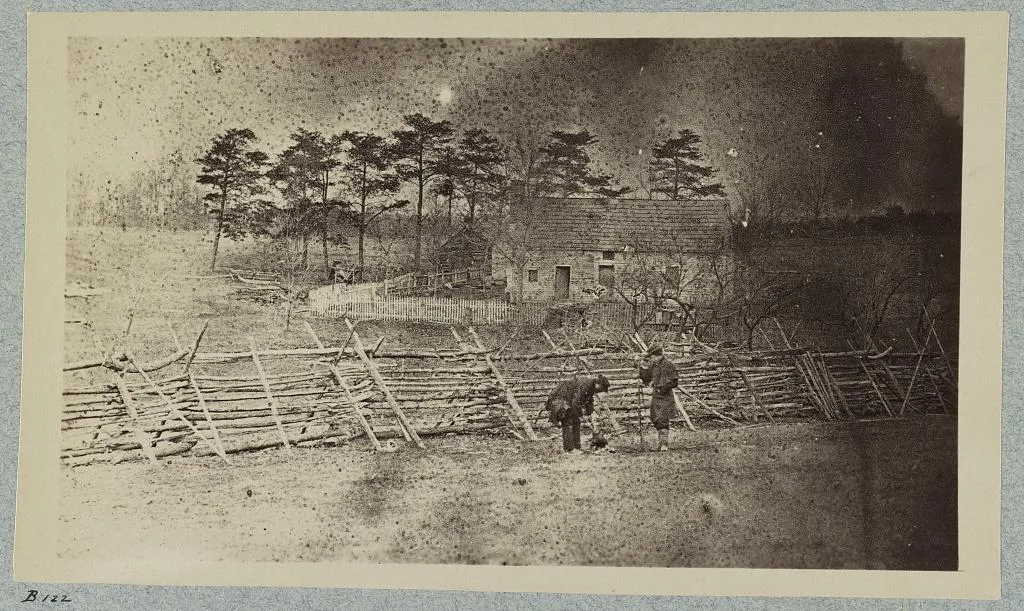Was the First Battle of Bull Run Really ‘The Picnic Battle’?
Yep. But it was anything but frivolous
/https://tf-cmsv2-smithsonianmag-media.s3.amazonaws.com/filer/21/50/21500ac2-e145-4a1d-a8bb-0c184ef257c7/bull_run.jpg)
Nobody realized that the battle fought at Bull Run on July 21, 1861, was going to be remembered as the first gory conflict in a long and bloody war.
Bull Run, the first land battle of the Civil War, was fought at a time when many Americans believed the conflict would be short and relatively bloodless, writes the Senate Historical Office. That's part of the reason why civilians did go out to watch it. And yes, many did bring food. But though the juxtaposition of picnic food and battlefields might seem strange in hindsight, many of the picnickers were there because they had to be.
Almost as soon as the battle was over, newspapers–which would play an outsize role in shaping public perceptions of the war–satirized the picnickers of Bull Run as frivolous. The Boston Herald published a lengthy, not-so-funny comedy poem about the scene. In it, poet H.R. Tracy describes a story “lacking in glory” about careless picnickers who heedlessly went out to watch the battle and then ran away, driving over dead and wounded in their carriages. This kind of public perception gave rise to the idea of Bull Run as the “picnic battle.” But there was more going on.
It’s not totally certain how many onlookers from Washington took to the area around the battlefield at Bull Run to watch “a Union Army made up of very green recruits… march boldly into combat,” writes the Senate Historical Office. Those recruits were all volunteers who had signed up to Lincoln’s army for a 90-day term, because it was thought the war would be over that fast. It’s also hard to assess what kinds of watchers there were–men, women and children according to some sources, but mostly men, according to others.
Those onlookers did bring food and even picnic baskets to watch the battle. As Jim Burgess writes for the Civil War Trust, though, it was anything but a leisurely day out for either spectators or combatants. Picnic food “was more of a necessity than a frivolous pursuit on a Sunday afternoon,” writes Burgess. Centreville, where the battle was fought, was a seven-hour carriage ride away from Washington, and Union onlookers “could not rely on the hospitality of local Virginians, now citizens of a rival nation,” he writes.
A Union captain named John Tidball later wrote in a passage reproduced by Burgess that he saw a “throng of sightseers” near his position. Tidball later described a crowd of men (and a few enterprising saleswomen who brought “pies and other edibles” to sell) eager to watch the battle. “It was Sunday and everybody seemed to have taken a general holiday; that is all the male population,” he wrote.
In attendance were a dozens of members of Congress, writes Michael E. Ruane for The Washington Post. They were joined by war journalist William Howard Russell and war photographer Mathew C. Brady, he writes. For these picnickers, the battle wasn’t just a spectator sport. It was important politically–so politicians attended; it was important socially–so journalists attended; and it was an opportunity to sell food–so food-sellers attended.

At the end of the day, though, Tidball described beating a weary retreat in the company of several United States senators who came to watch the battle. “As other picnickers returned, each took the first carriage available,” writes author Eugene C. Tidball. Everyone was trying to get away quickly. “Carriages collided, tearing away wheels; then horses were cut loose and ridden without saddles,” he writes. John Tidball recalled a rumor about a terrifying group of mounted soldiers known as “the Black-horse Cavalry” who were allegedly chasing the retreating troops. (It was just a rumor.) This fear kept everyone going.
At the end of the battle, writes Ruane, New York congressman Alfred Ely had been captured by the Confederacy; judge Daniel McCook took his wounded son, who had fought, home to die the next day; and nearly five thousand others were dead or wounded. It must have been a terrifying suggestion of what was to come.
Editor's note: This article originally stated that nearly five thousand soldiers were killed in the battle; in actuality, that number includes both dead and wounded. Smithsonian.com regrets the error.